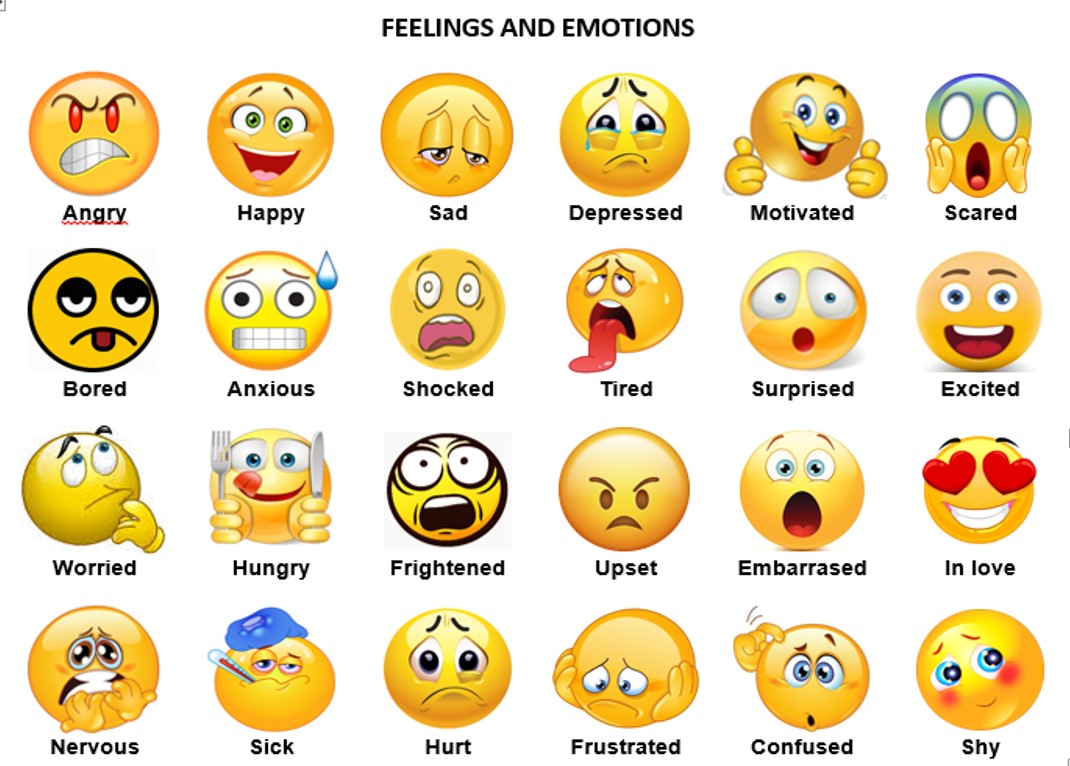

This article was originally published on Berkeley News. “We wanted to take an important first step toward solving the mystery of how music can evoke so many nuanced emotions.” “Music is a universal language, but we don’t always pay enough attention to what it’s saying and how it’s being understood,” Cowen said. For Cowen, who comes from a family of musicians, studying the emotional effects of music seemed like the next logical step. But this is less likely the case with traditional Chinese music, with which the findings were validated.Ĭowen and Keltner previously conducted a study in which they identified 27 different human emotions, in response to visually evocative YouTube video clips.
#Videos for different moods movie#
Researchers acknowledge that some of these associations may be based on the context in which the study participants had previously heard a certain piece of music, such as in a movie or YouTube video. Meanwhile, heavy metal was widely viewed as defiant and, just as its composer intended, the shower scene score from the movie Psycho triggered fear. Al Green’s “Let’s Stay Together” evoked sensuality, and Israel (Iz) Kamakawiwoʻole’s “Somewhere over the Rainbow” elicited joy. The Clash’s “Rock the Casbah” pumped them up. Vivaldi’s “Four Seasons” made people feel energized. Their responses validated the 13 categories.

To ensure the accuracy of these findings in a second experiment, nearly 1,000 people from the United States and China rated over 300 additional Western and traditional Chinese music samples that were specifically intended to evoke variations in valence and arousal. Using statistical analyses, the researchers arrived at 13 overall categories of experience that were preserved across cultures and found to correspond to specific feelings, such as “depressing” or “dreamy.” Next, nearly 2,000 study participants in the United States and China each rated some 40 music samples based on 28 different categories of emotion, as well as on a scale of positivity and negativity, and for levels of arousal. From those, the researchers built a collection of audio clips to use in their experiments. First, these volunteers scanned thousands of videos on YouTube for music evoking a variety of emotions. How they conducted the studyįor the study, more than 2,500 people in the United States and China were recruited online. But their opinions varied on the level of “arousal,” which refers in the study to the degree of calmness or stimulation evoked by a piece of music. “People from different cultures can agree that a song is angry, but can differ on whether that feeling is positive or negative,” said Cowen, noting that positive and negative values, known in psychology parlance as “valence,” are more culture-specific.Īcross cultures, study participants mostly agreed on general emotional characterizations of musical sounds, such as anger, joy, and annoyance. and Chinese study participants identified similar emotions-such as feeling fear when hearing the Jaws movie score-they differed on whether those emotions made them feel good or bad. Mini-breaks of staring at lovable little cats or hedgehogs that you’ve never seen before is all that’s needed to grab a dose of dopamine.įindings in a survey of 7000 internet users revealed similar outcomes for improved mood and increased energy. In an article for The Conversation, Jessica Myrick, associate professor of media studies at Penn State, writes: “Aome research suggests that taking short breaks for a mood-boosting activity, be it petting an actual dog or watching a video of one online, may not only improve your mood but also decrease stress or re-energize you when you do return to your work.Potential applications for these research findings range from informing psychological and psychiatric therapies designed to evoke certain feelings to helping music streaming services like Spotify adjust their algorithms to satisfy their customers’ audio cravings or set the mood. The five main types of coping skills are: problem-focused coping, emotion-focused coping, religious coping, meaning-making, and social support. Spending an hour watching the cute and cuddly isn’t what we’re talking about here. Who woulda thought surfing for different cute puppy videos or getting new ones from your friends isn’t a bad thing after all? In moderation, of course. But the trick here is that the image needs to be a surprise otherwise the reward system won’t get “tripped.” The amygdala (a part of the brain involved with experiencing emotions) is turned on when you stare at cute pictures or videos. The benefit is even stronger when reward and emotions are paired together, Krigolson explains.


 0 kommentar(er)
0 kommentar(er)
